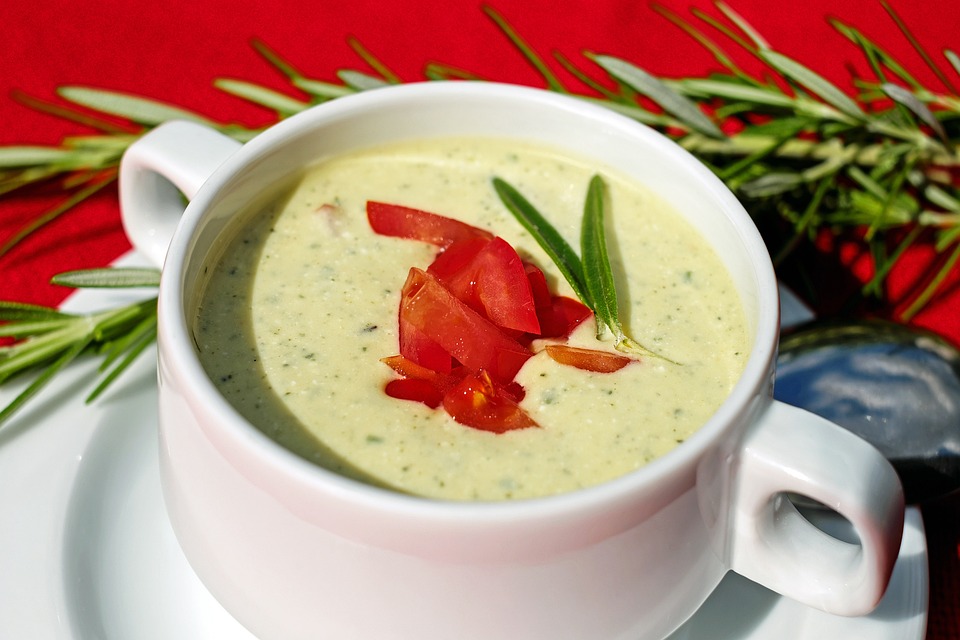[ad_1]
When it comes to creating a delicious and flavorful soup, there is one secret ingredient that can take your dish to the next level: miso. Miso is a traditional Japanese seasoning produced by fermenting soybeans with salt and koji (a type of fungus) and sometimes other ingredients such as rice or barley. The result is a thick paste used for sauces and spreads, pickling vegetables or meats, and mixing with dashi soup stock to serve as a base for miso soup.
Adding Depth and Umami Flavor
One of the key reasons why miso is such a powerful ingredient in soup is its ability to add depth and umami flavor to the dish. Umami is often described as the fifth taste, alongside sweet, salty, sour, and bitter. It is a savory, rich, and full-bodied flavor that enhances the overall taste of a dish. Miso is packed with umami, making it an excellent addition to soups and broths.
By adding miso to your soup, you can elevate the flavor profile and create a more complex and satisfying dish. The umami-rich nature of miso also allows it to complement a wide range of ingredients, from vegetables and tofu to seafood and meats, making it a versatile ingredient for various soup recipes.
Boosting Nutritional Value
In addition to enhancing flavor, miso is also known for its nutritional benefits. It is a good source of protein, providing essential amino acids that are vital for overall health. Miso also contains probiotics, which are beneficial bacteria that promote a healthy gut and digestion. These probiotics can help boost the immune system and improve overall gut health.
Furthermore, miso is rich in various vitamins and minerals, including B vitamins, iron, calcium, and magnesium. These nutrients can contribute to a well-balanced diet and support overall well-being. By incorporating miso into your soup, you can not only enhance its taste but also increase its nutritional value.
How to Use Miso in Soup
There are several ways to incorporate miso into your soup recipes. One popular method is to start by preparing a dashi stock, a flavorful broth commonly used in Japanese cuisine. Dashi is typically made from kombu (dried kelp) and bonito flakes (dried, fermented, and smoked skipjack tuna). Once the dashi is prepared, the miso paste is then added to the stock, creating a rich and aromatic base for miso soup.
When adding miso to your soup, it is essential to do so at the right time. Miso should be added toward the end of the cooking process, as high heat can destroy its delicate flavors and beneficial enzymes. By gently dissolving the miso in a small amount of warm broth before adding it to the entire soup, you can ensure that its rich flavor is fully integrated into the dish.
Conclusion
Miso is a magical and often overlooked ingredient that can transform a simple soup into a delicious and nourishing dish. With its ability to add depth and umami flavor, boost nutritional value, and complement a wide range of ingredients, miso is a versatile and essential component of any soup recipe. By exploring the various ways to use miso in soup, you can unlock its full potential and elevate your culinary creations to new heights.
FAQs
What type of miso should I use for soup?
There are several types of miso available, including white (shiro), red (aka), and mixed (awase) miso. For a lighter and milder flavor, white miso is a good choice. Red miso, on the other hand, has a bolder and more robust flavor. Mixed miso offers a balanced combination of both white and red miso. The type of miso you use will depend on your personal preference and the specific flavor profile you want to achieve in your soup.
Can miso be used in non-traditional soup recipes?
Absolutely! While miso is commonly used in traditional Japanese soups such as miso soup, it can also be incorporated into a wide range of non-traditional soup recipes. Miso can add depth and umami flavor to vegetable soups, noodle soups, and even creamy soups such as butternut squash or sweet potato soup. Feel free to experiment with miso in different soup recipes to discover new and exciting flavor combinations.
Is miso suitable for individuals with dietary restrictions?
Miso is typically gluten-free and vegan, making it suitable for individuals with dietary restrictions. However, it is essential to check the ingredients list of the miso paste to ensure that it meets your specific dietary requirements. Some commercially available miso pastes may contain added ingredients such as barley, so be mindful of potential allergens if you have dietary restrictions.
[ad_2]




Comments